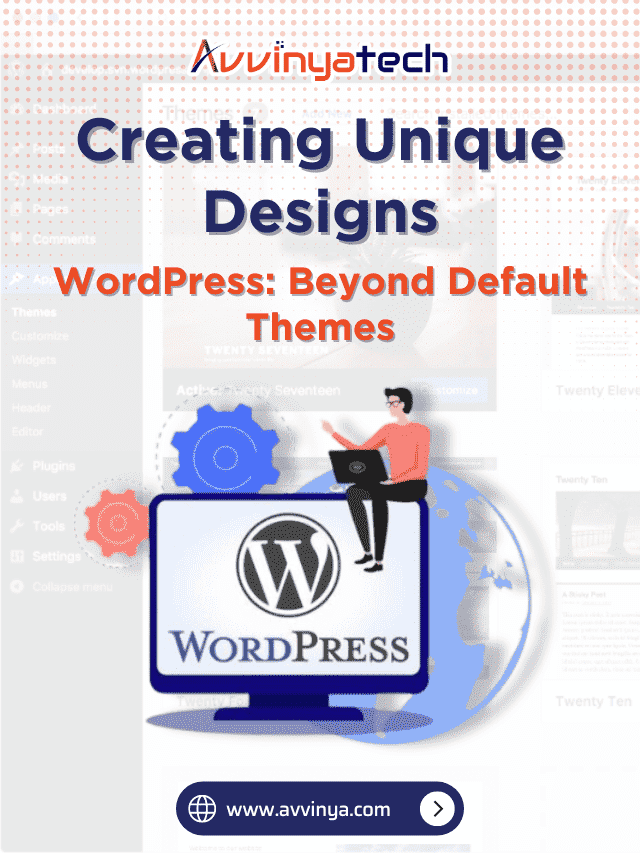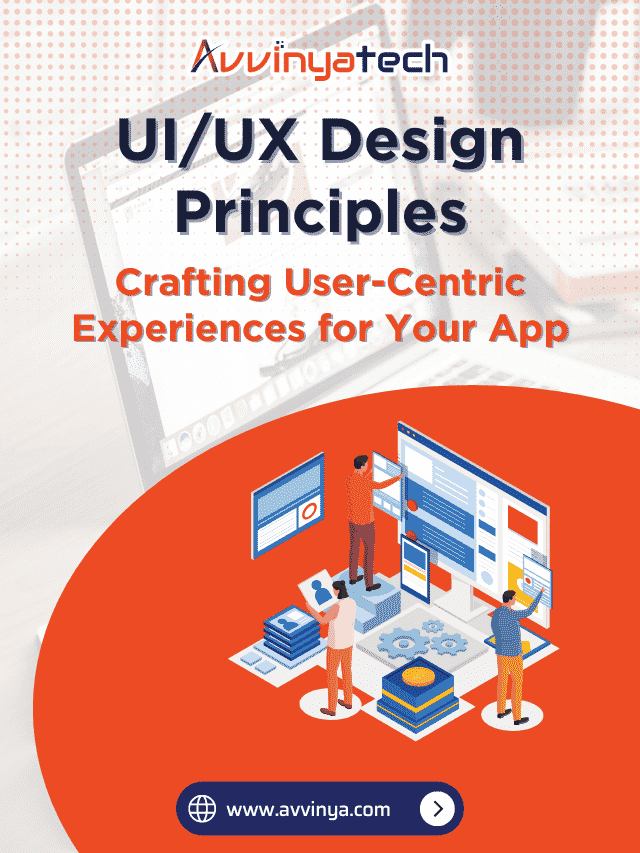Overcoming User Research Challenges in UI/UX Design
In the fast-evolving field of UI/UX design, understanding user needs and behaviors is critical for creating intuitive and effective interfaces. However, conducting user research can present several challenges that designers must navigate. This article will explore the common obstacles faced in user research and provide strategies to overcome them, ensuring that your design process is as smooth and effective as possible.
The Importance of User Research in UI/UX Design
User research is the backbone of any successful UI UX design project. It provides insights into user needs, behaviors, and pain points, which can inform design decisions and lead to more user-friendly products. Without thorough user research, designers may rely on assumptions that could result in designs that do not meet user expectations.
Common Challenges in User Research
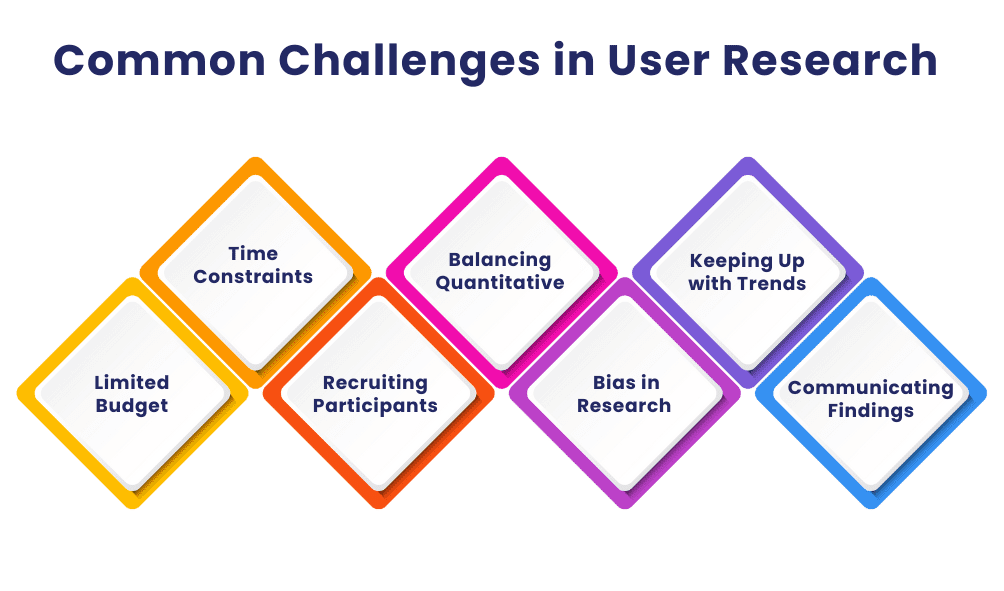
-
Limited Budget
Budget constraints are a common hurdle in user research. Many organizations, especially startups, may not allocate sufficient funds for comprehensive research. This can limit the scope of research activities and the number of participants involved.
-
Time Constraints
Time limitations often pressure design teams to shorten or skip user research phases. This can lead to incomplete data and insights, ultimately affecting the quality of the final design.
-
Recruiting Participants
Finding the right participants for user research can be challenging. Participants need to match the target user persona to provide relevant insights. Recruiting these individuals can be time-consuming and expensive.
-
Balancing Quantitative and Qualitative Data
Quantitative data provides measurable insights, while qualitative data offers deeper understanding of user behaviors and motivations. Balancing these two types of data can be challenging but is essential for a comprehensive understanding of user needs.
-
Bias in User Research
Bias can creep into user research at various stages, from participant selection to data analysis. This can skew results and lead to inaccurate conclusions.
-
Keeping Up with UI UX design Trends
The digital landscape is constantly evolving, with new technologies and trends emerging regularly. Staying updated with these changes and understanding how they affect user behavior can be difficult.
-
Communicating Findings
Presenting research findings in a way that is understandable and actionable for stakeholders can be challenging. Effective communication is crucial for ensuring that research insights are implemented correctly.
Strategies to Overcome User Research Challenges
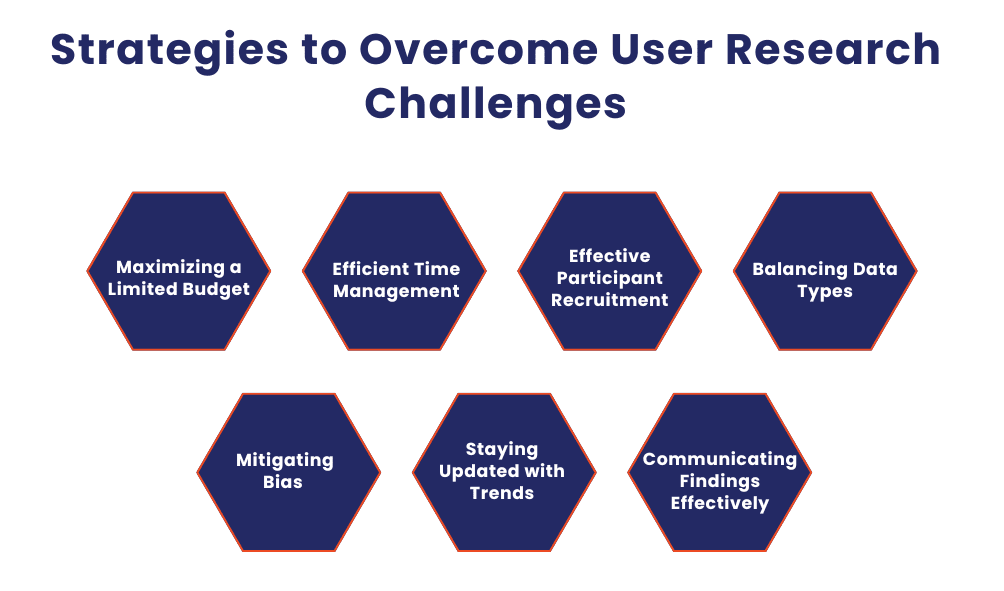
-
Maximizing a Limited Budget
To make the most of a limited budget, prioritize essential research activities that will have the most impact. Utilize cost-effective methods such as online surveys, remote usability testing, and leveraging existing data.
-
Efficient Time Management
Integrate user research into the design process from the beginning to avoid last-minute rushes. Use agile methodologies to conduct iterative research and design cycles, ensuring that you gather insights continuously without delaying the project.
-
Effective Participant Recruitment
Use multiple channels to recruit participants, such as social media, professional networks, and user panels. Offering incentives can also attract more participants. Additionally, consider using remote research tools to widen your pool of potential participants.
-
Balancing Data Types
Employ mixed methods research to balance quantitative and qualitative data. Start with quantitative methods like surveys to gather broad insights, then use qualitative methods such as interviews and focus groups to dive deeper into specific areas.
-
Mitigating Bias
To reduce bias, ensure that your research methods and participant selection processes are as neutral as possible. Use random sampling techniques and validate your findings with multiple data sources. Training researchers to recognize and mitigate their own biases is also crucial.
-
Staying Updated with Trends
Regularly engage with industry publications, attend webinars, and participate in professional communities to stay updated with the latest trends. Continuous learning and adapting to new tools and methodologies will help you stay ahead in the dynamic field of UI/UX design.
-
Communicating Findings Effectively
Create clear, concise, and visually engaging reports and presentations to communicate research findings. Use storytelling techniques to make the data more relatable and actionable for stakeholders. Tools like infographics and user journey maps can help visualize complex data.
Tools and Techniques for Effective User Research
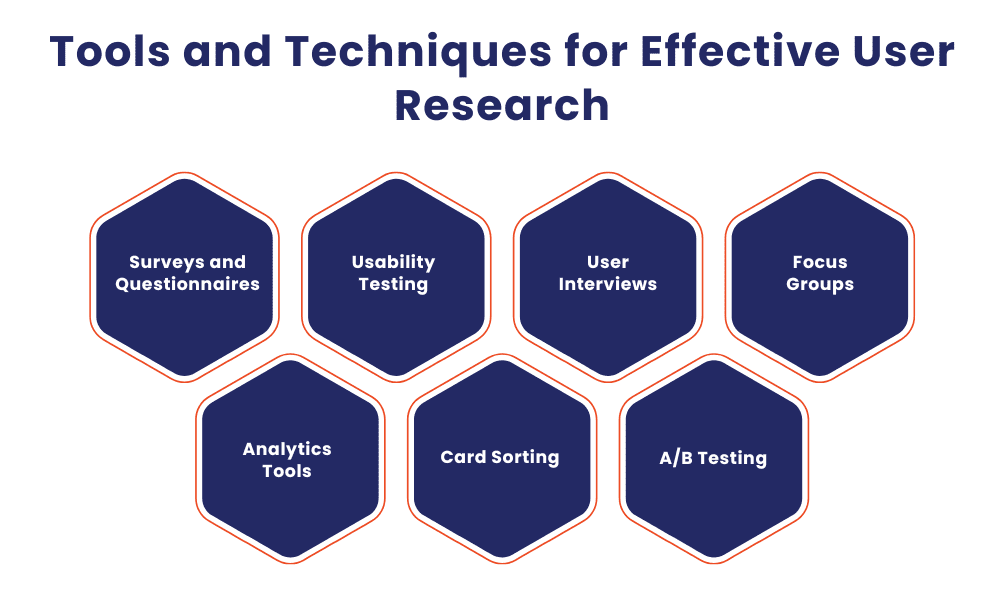
-
Surveys and Questionnaires
Surveys are a cost-effective way to gather quantitative data from a large audience. Tools like Google Forms, SurveyMonkey, and Typeform make it easy to create and distribute surveys.
-
Usability Testing
Usability testing involves observing users as they interact with your product. This can be done in person or remotely using tools like UserTesting and Lookback. It provides valuable insights into user behaviors and pain points.
-
User Interviews
Conducting one-on-one interviews allows for deep exploration of user needs, behaviors, and motivations. Interviews can be structured, semi-structured, or unstructured depending on the research goals.
-
Focus Groups
Focus groups involve guided discussions with a group of users. This method is useful for generating ideas and understanding user attitudes and perceptions.
-
Analytics Tools
Tools like Google Analytics, Hotjar, and Crazy Egg provide quantitative data on how users interact with your product. This data can reveal patterns and areas for improvement.
-
Card Sorting
Card sorting helps understand how users categorize information. This technique can inform the information architecture of your product, ensuring that it aligns with user expectations.
-
A/B Testing
A/B testing involves comparing two versions of a design to see which performs better. This method is effective for making data-driven decisions and optimizing user experience.
The Role of Empathy in User Research
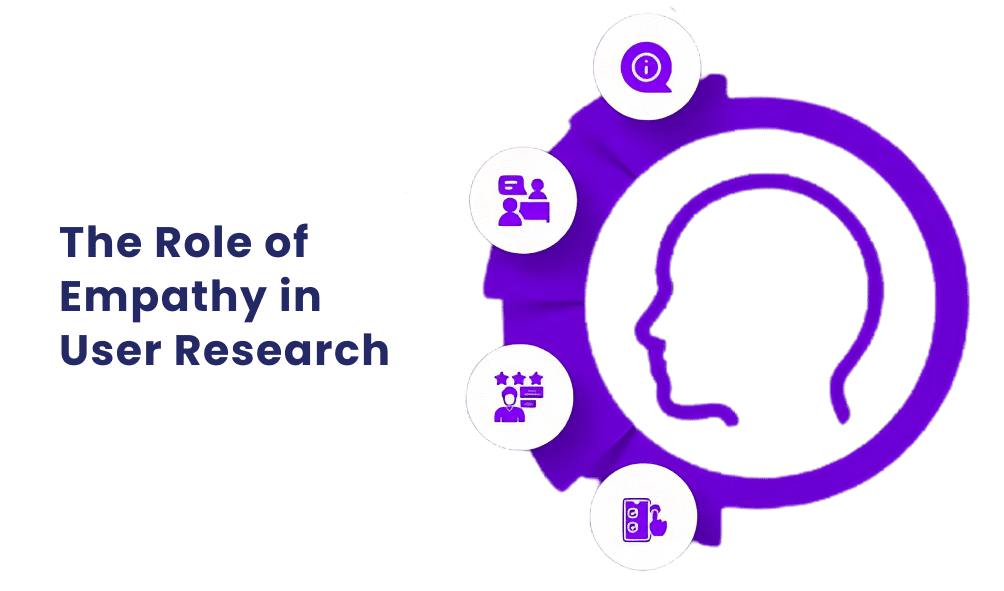
Empathy is crucial in user research. Understanding users’ emotions, frustrations, and needs can lead to more intuitive and effective designs. Empathy can be fostered through techniques like persona development, where detailed profiles of target users are created to guide design decisions.
Integrating User Research into the Design Process
User research should not be a one-time activity but an ongoing process integrated into every stage of the design lifecycle. From initial concept development to post-launch evaluations, continuous user feedback helps refine and improve the product.
Conclusion
Overcoming user research challenges in UI/UX design requires a strategic approach and a commitment to understanding user needs. By addressing budget and time constraints, effectively recruiting participants, balancing data types, mitigating bias, staying updated with trends, and communicating findings effectively, designers can ensure their research leads to actionable insights. Incorporating empathy and integrating user research throughout the design process further enhances the ability to create user-centered designs. At Avvinya, we strive to overcome these challenges and deliver exceptional UI/UX design services that meet and exceed our clients’ expectations.
At avvinya, We Have Pros and Peers for More Insights!
Connect with our professional web and app specialists to achieve impeccable development and seamless execution. Allow us to comprehend your industry obstacles and deliver efficient solutions, unlocking your business potential.
Contact us today for further information (+1) 346 698 8668
(+1) 346 698 8668 













